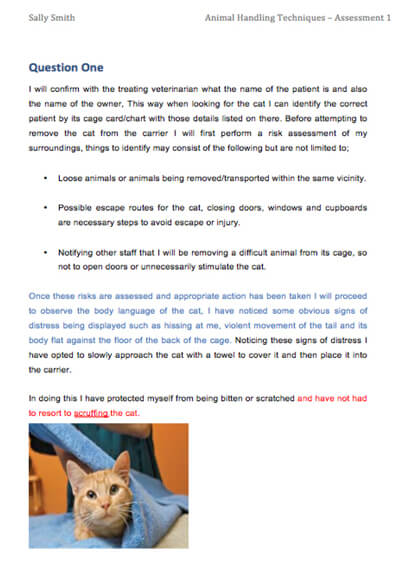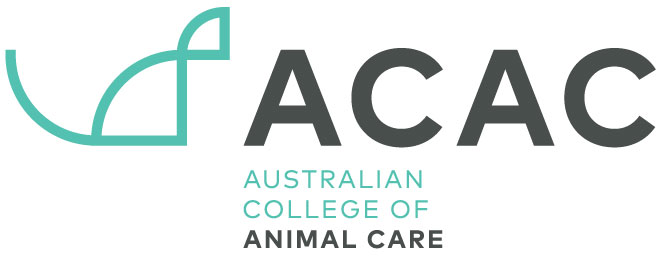MENTOR HANDBOOK
student handbook
WRITTEN ASSESSMENTS
Block "mentor-handbook-quick-navigation" not found
introduction
A Note from our Managing Director
TECHNICAL REQUIREMENTS & ACCESS
ASSESSMENT
FEES, FINANCE & PAYMENT PLANS
studying with us
Unreasonable Conduct by Students
Unreasonable Student Conduct Procedure
Enrolment Duration & Extending
Language, Literacy & Numeracy Support
Under 18 Students: Info for parents & guardians
OTHER POLICIES
WRITTEN ASSESSMENT PRESENTATION

Presentation is important! All written assessments must be a size 11 arial font in black and double spaced. Resubmission changes must be in blue, and third attempts in red. Many assessments have templates in the learning centre students can download and use.
Students should ensure they use paragraphs and we recommend using pictures to help explain your answers. Some assessments it is mandatory to supply specific pictures of the student completing a task to pass (check the instructions).
All assessments must be submitted as a PDF unless it specifically states otherwise in the instructions. They also have to be under 2mb in size, so images might have to be compressed in order for the file size to shrink.
REFERENCING
All assessment work submitted must be the student’s own work. That is, even if they get information from another source, it must be written in their own words to show their understanding. They cannot just copy in text from another source. Please refer to the Plagiarism Policy for information on this.
It is expected that students will reference all their sources utilised when writing their assessments. For many assessments, they may only use their textbooks and the learner’s guides, but for some they may wish to do external research.
At Diploma level, we do expect that students would have done additional research through peer reviewed journals and textbooks.
We ask that the Harvard Referencing System is used and both in text citations and a reference list, included. We won’t penalise students if they get the formatting of their referencing not quite right, but we may refuse to mark an assessment if both in-text citations and a reference list is not included.
Refer to the Research, Referencing & Plagiarism Guide for full details on how to format references.
We also have a Referencing Cheat Sheet that shows how to format references commonly used by our students.
SPELLING & GRAMMAR
As part of educating students as professionals, we feel that it is important students use correct grammar and spelling within ALL the assignments.
Additionally part of the Government stipulated training package for all vocational qualifications requires us to assess language, literacy and numeracy skills as adequate for the tasks the industry expects graduates to perform.
When in the workplace, using correct grammar and spelling is essential to provide a professional image. Students may also be performing drug calculations, which if wrong, can have disastrous consequences for patients.
If an Educator finds an excess of spelling, grammar or typos in an assessment, it will be returned to the student for resubmission prior to marking the assessment. Minor errors here and there won’t affect passing – we are all human after all! Students will never fail on spelling and grammar, however if we cannot understand what they are writing – we may not be able to pass them!
Proof Reading Assessments
Whilst not a mandatory part of your role, we do recommend helping the student by proof reading their assessments – especially the case studies. The student can utilise other non-mentors for this role as well and in no way should insist you do it for them.
FILE NAME CONVENTION
For ease of identification of assessments, it is very important that you use the right file naming convention AND that you ensure your name, assessment number and subject details appears in the header of your document.
An example of an acceptably named file would be as follows:
1.1 ABH Submission SURNAME Firstname
1.1 ANRT Submission SURNAME Firstname
The first digit (1) represents the assessment number and the second digit (also 1) represents your attempt number. In this case this would be the first attempt for assessment 1.
The three-letter or four-letter code is the name of the subject you are studying (ABH = Animal Behaviour & Handling; ANRT = Animal Handling & Restraint).
FEEDBACK FROM THE EDUCATORS
Students can locate feedback in the same area that they uploaded an assessment in the Learning Centre. Students will generally receive an email to alert them via your student email (check spam as well). It is important however that students keep on top of their studies, including checking their results and feedback regularly. There is a space in each Learner’s Guide to record the submission date and result.
Feedback forms have 4 columns that will receive a tick:
-
Point Missing:
If there’s a tick in this column, this will indicate that the student has forgotten to include an important point in their response.
-
Needs More Detail:
If there’s a tick in this column, this indicates that the student is on the right track, however they have not quite met all of the criteria required or their response needs a little clarification.
-
Meets Standard / Above Standard:
Congratulations to those that receive ticks in these columns. This means that the student has met the criteria required and does not need to make any additions or changes.
The assessor will also provide comments to help guide the student in the right direction and may include some extra information to aid learning. If the student is unsure of what the assessor is asking of them or the feedback is unclear, please get in touch with Student Assist for further clarification before uploading a resubmission.
If the student believes that they have met all the criteria and do not agree with the assessors comments, they have the opportunity to appeal. This is a formal process that must follow the Assessment Appeals Policy & Procedure.
Third Attempts
Students have two attempts for all assessments. If they are asked for a resubmission, this is not a “fail”, but rather means that they have not quite met all of the assessment requirements and need to provide some further detail in order to meet competency.
We may grant a free third attempt if the student has just missed one small point. If they have missed a few points, they may be eligible for a third attempt. In this instance, this will incur a fee for extra Educator time. Students can only have one third attempt per subject.
If the student does not meet the eligibility requirements for a third attempt they will be graded as “not satisfactory” for the subject overall and will be required to re-enrol.
The key to avoiding third attempts and their fees is to always read the assessment instructions fully, discuss “what, why, how”, and if it requires a resubmission (2nd attempt) – read the Educator feedback carefully and call us to discuss if they do not understand what else is required.
